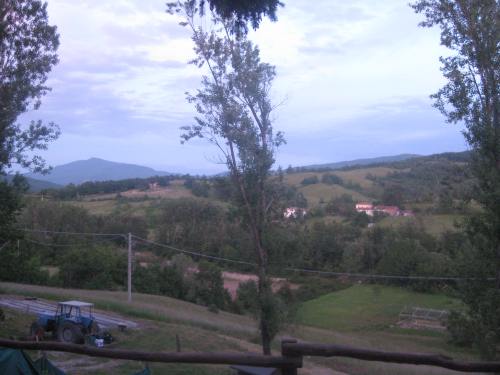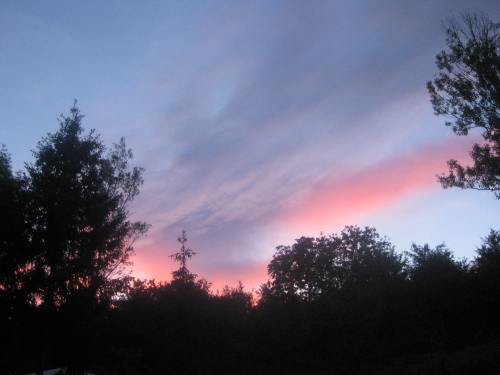In the past two months, we’ve gone from laying irrigation lines and only beginning to plant entire fields to being well into the harvest. We’ve cut and bailed most of the property, staked several rows of tomatoes, and prepared for the ever delayed arrival of the new pigs. Obviously this wasn’t all thanks to my work, but I feel pretty good about the role I played in all of it. When I left yesterday , it wasn’t with a sense of accomplishment though, but a feeling of having things left unfinished. The season’s far from over and there’s much more to do. The pigs showed up yesterday 6 hours after I left and 6 weeks after we’d expected them. My Italian’s finally beginning to shape up, and I’ve established enough of a foundation that I’m starting to hit the spike in that exponential learning curve. I wish I could stay out the rest of the season, but with my visa expiring in less than a month, I’ll just have to wait to resume the pastoral life until I get to Turkey.
On the plus side though, I’ll be travelling around Italia for the next 4 weeks or so before I return to work. Right now I’m writing from my hotel balcony in Venice. I can’t say the view’s spectacular, but it’s still my own personal balcony in Venice. I went touring through the markets this morning and it really made me wish that I had a full kitchen while I was here. The seafood market is incredible and carries so many different types of fish, many of which I could identify and many more which I couldn’t.
The butchers in Italia are incredible. While industrial food production has squeezed many less typical types of meat out of the market in America, many of these rarer meats are still readily available in Italy, where laws have protected small stores and their suppliers since the fascists were in power. With less people buying their groceries in supermarkets there’s more variety for all kinds of foods. This is especially apparent when it comes to meats. Since coming to Italy, I’ve been served rabbit, capon, wild boar, and horse (best eaten raw), all without trying to seek them out . After lusting after all the meats and fish I couldn’t cook, I got myself some cold cuts, cheese, and a bag of fruit (can you say local kiwi). The Italians are much less inventive when it comes to animals for their deli meats, with nearly all their sandwich meat coming from pigs except for bresaola which is a salted and smoked beef that costs upwards of 40 euro a kilo.
I ate my lunch beneath a tree in Campo San Polo, and then headed off towards the Academia and the arts district. As the crow flies the Academia is maybe about 400 meters directly south of where I was eating. In New York this would be a 5 minute walk, maybe 7 if there were some bad street crossings. In Venezia it takes 20 minutes provided you don’t make any wrong turns, a caveat which is far from trivial if you’d like to look out from above your map every now and again. There are no through streets on the whole island, where every walk is conducted via the ducks and turns of narrow roads that are hardly distinguishable from alleys. Without any clear lines between different places, Venice is a city of points, connected by a maze of alleys and bridges that wind over and along the city’s many canals. The Grand Canal makes a large mirrored “S” through the island and is spanned by only four bridges adding to the complication and making these vertices key to the navigation of the many other disparate points. The buildings push in against the narrow streets, squeezing out sky, and at night their upper halves are lost and fade into the black above. There are less piazzas or open spaces than in other Italian cities, as there is only so much room on an island has only so much space. This has a significant effect on the architecture as the streets and canals push you up against the buildings and prevent the type of awesome facade that characterizes the architecture of other Renaissance powers like Florence or Milan. In Venice the most magnificent buildings don’t overlook piazzas, but the canals. Domes litter the skylines around the Grand Canal where they can be seen over the congestion of the streets, and the Doge’s Palace, set against the one great piazza on the island fronts its best face to large ships in the Canal di San Marco.



